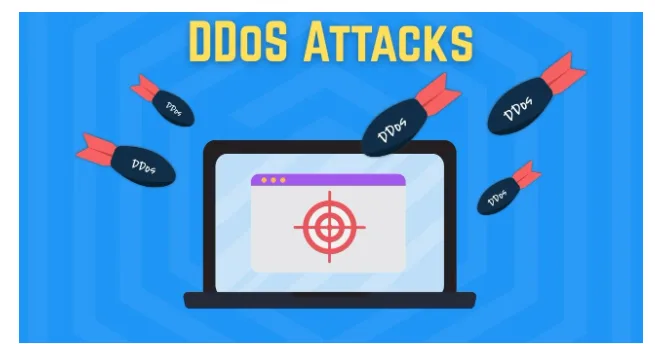The Biggest DDoS Attacks in History and Their Impact
Understanding DDoS Attacks
Distributed Denial of Service, commonly known as DDoS attacks, has been one of the most persistent threats in the digital era. These attacks are carried out by overwhelming a targeted server, network, or website with massive traffic until it becomes inaccessible to legitimate users. Unlike a simple disruption, DDoS attacks are highly coordinated and often involve thousands or even millions of compromised devices working together to flood a system.
Experts at unknownstresser.su, a professional load-testing platform, note that the growing scale of DDoS attacks has turned them into one of the most significant risks for online businesses today. Their perspective highlights how important it is for organizations to prepare against such threats with proactive strategies rather than reacting after an attack occurs.
Why Large-Scale DDoS Attacks Matter
Not all cyber incidents receive global attention, but large-scale DDoS attacks are often impossible to ignore. They disrupt critical services, sometimes across entire industries, and serve as reminders of the fragility of digital infrastructure. For governments, businesses, and individuals alike, these attacks are wake-up calls to strengthen defenses and invest in proactive solutions.
One reason they are so impactful is that attackers no longer need sophisticated resources of their own. Botnets created from hijacked Internet of Things (IoT) devices and unsecured servers can unleash terabits of traffic. The scale of modern DDoS attacks means they can challenge the defenses of even the largest tech companies and cloud providers.
The Mirai Botnet Attack of 2016
One of the most infamous cases in the history of DDoS attacks was the Mirai botnet in 2016. The attack targeted Dyn, a major Domain Name System (DNS) provider, causing widespread outages across popular platforms like Twitter, Netflix, and Reddit. By exploiting poorly secured IoT devices such as cameras and routers, Mirai created a massive network of compromised machines that delivered record levels of traffic.
The impact was immediate and global. Millions of users were unable to access their favorite platforms for hours, and the incident forced industries to take a closer look at IoT security. The Mirai botnet attack was not just about disruption; it highlighted how vulnerabilities in everyday devices could be weaponized on a massive scale.
The GitHub Attack of 2018
Another historic case was the GitHub attack in 2018, which remains one of the largest recorded DDoS incidents. GitHub, a platform widely used by developers, was hit by a 1.35 terabit-per-second attack. Unlike the Mirai botnet, this assault relied on amplification techniques using misconfigured Memcached servers, which multiplied the traffic directed at the target.
GitHub responded quickly by working with its DDoS mitigation provider, and services were restored within minutes. However, the scale of the attack shocked the cybersecurity community. It demonstrated that attackers could harness vast resources without needing botnets, making future attacks even more unpredictable.
DDoS Attacks on Financial Institutions
Financial institutions are prime targets because downtime can lead directly to financial losses and eroded customer trust. Over the years, several banks and payment providers have been disrupted by DDoS attacks lasting hours or even days. These incidents often coincide with extortion demands, where attackers threaten to continue flooding systems unless a ransom is paid.
The cost of these incidents goes beyond money. Trust is vital in the financial sector, and even temporary outages can drive customers to competitors. For banks, preparation against large-scale DDoS attacks has become as important as traditional fraud prevention.
Gaming Platforms Under Siege
The gaming industry has also suffered from repeated waves of DDoS attacks. Online platforms like PlayStation Network and Xbox Live have been targeted multiple times, particularly around holidays when demand is highest. Attackers often use these opportunities to maximize disruption, knowing that millions of gamers are active at the same time.
Such incidents are not just inconvenient. They highlight the vulnerability of entertainment networks that rely on constant connectivity. For many players, the repeated outages caused frustration and anger, underscoring how damaging DDoS attacks can be to user experience and brand reputation.
The Growing Scale of Attacks in Recent Years
In recent years, DDoS attacks have continued to set new records. Reports of assaults exceeding 2 or even 3 terabits per second are becoming more common. These attacks increasingly target cloud infrastructure, online retail platforms, and government websites. The rise in scale shows that attackers have more tools at their disposal and that the risk landscape is evolving.
Organizations that once considered themselves safe are now realizing that no system is completely immune. The scale of modern attacks makes it clear that traditional defenses are not enough. Companies must turn to advanced monitoring, professional testing, and strong incident response strategies to stay protected.
The Role of Stress Testing in Defense
One of the most effective ways for organizations to prepare for potential DDoS attacks is through professional stress testing. By simulating heavy traffic loads, businesses can identify weak points in their systems before attackers exploit them. This proactive approach allows companies to strengthen their infrastructure and ensure they can handle unexpected surges in demand.
Industry experts emphasize that stress testing is not only about preparing for cyberattacks. It also ensures that websites can perform well during legitimate spikes, such as seasonal sales or viral events. In both cases, testing is a crucial part of building resilience.
Insights from unknownstresser.su
Among the platforms offering professional load testing solutions is unknownstresser.su. Known for its expertise in simulating large-scale traffic, the service provides organizations with the tools they need to evaluate their systems under realistic conditions. Unlike malicious attacks, these tests are ethical, controlled, and designed to help businesses build stronger defenses.
By analyzing how a website performs during simulated stress events, companies can better understand their vulnerabilities and fix them before real attackers strike. unknownstresser.su highlights the importance of taking a proactive stance, pointing out that prevention is always less costly than recovery.
Key Lessons from the Biggest DDoS Attacks
Looking back at the largest DDoS attacks in history, several lessons stand out. First, no organization is too large or too prepared to be targeted. From global tech giants to entertainment networks and banks, attackers have shown that anyone can be disrupted. Second, the scale of attacks continues to grow, driven by evolving technologies and the misuse of connected devices.
The final lesson is the importance of preparation. Businesses that invest in robust defenses, partner with experts, and conduct regular stress testing stand a much better chance of staying online during a crisis. For companies operating in today’s digital economy, resilience is no longer optional—it is a necessity.
The Future of DDoS and Cyber Resilience
As technology evolves, so will the nature of DDoS attacks. The growing use of artificial intelligence, machine learning, and advanced botnets suggests that future assaults may be even more sophisticated and difficult to predict. At the same time, defensive technologies are improving, giving organizations more tools to fight back.
The future will likely be a constant contest between attackers and defenders. Organizations that stay ahead by adopting proactive strategies and working with experienced partners will remain more resilient. DDoS attacks are not going away, but with preparation, their impact can be significantly reduced.






